To old school computing bods like us, it doesn’t seem that long ago that floppy disks were the main way you lugged your data around.
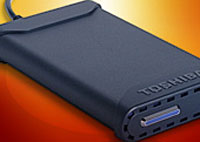 With its feeble 1.44MB storage space, that often meant you had to cart around great boxes of the things.
With its feeble 1.44MB storage space, that often meant you had to cart around great boxes of the things.
And with its gnat-like storage capacity, installing programs like Photoshop meant a lengthy spell sat by your machine, patiently feeding in a vast amount of grinding floppies and hoping that the last one in wouldn’t display a dastardly disk error.
Come 1994, the hi tech hotshots around town were sporting Iomega Zip drives, which served up a comparatively capacious 100MB of storage space (rising to 750MB in the final versions).
Although we felt the love for the increased capacity, the drive was quite a bulky beast, the disks weren’t cheap and folks lived in fear of suffering the dreaded click of death.
By the late 1990s, recordable CDs, cheap flash memory and external hard drives had become the modus operandi for portable storage users, although bigger and bigger files meant that the things soon filled up.
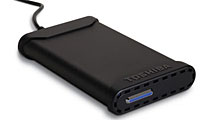 With this in mind, Toshiba – the world’s fifth-largest hard drive manufacturer – has decided to elbow its way into the portable drive market with its 2.5-inch USB 2.0 portable external hard drive offering a positively palatial 200GB of storage space. That works out at 57,000 digital photos, 52,000 MP3 songs or 88 DVD videos all wedged into its slimline case (approx 6″x4″x0.9″).
With this in mind, Toshiba – the world’s fifth-largest hard drive manufacturer – has decided to elbow its way into the portable drive market with its 2.5-inch USB 2.0 portable external hard drive offering a positively palatial 200GB of storage space. That works out at 57,000 digital photos, 52,000 MP3 songs or 88 DVD videos all wedged into its slimline case (approx 6″x4″x0.9″).
Claimed to offer the highest capacity of any backup solution in the compact 2.5-inch hard drive class, the 200GB beastie comes clad in a sleek vented black aluminum exterior, backed by a patent-pending shock mount system for extra protection.
The USB 2.0 drive also comes bundled with the NTI Shadow software which makes it a cinch to set up a back up schedule.
The full range of drives come in 200GB, 160GB, 120GB and 100GB capacities and the pricing looks good too, with suggested retail prices running from $229.99 (£115) for the 200GB model down to $129.99 (£65) for the 100GB.
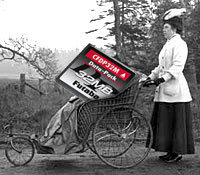 The two companies have revealed details about their Memorandum of Understanding (MOU) to develop a new SxS memory card format for professional camcorders.
The two companies have revealed details about their Memorandum of Understanding (MOU) to develop a new SxS memory card format for professional camcorders.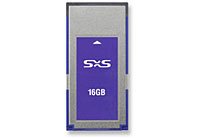 Although the card is too much of a heffalump to fit into digital compact cameras, it may appear in some high end medium format still cameras and other specialised snappers.
Although the card is too much of a heffalump to fit into digital compact cameras, it may appear in some high end medium format still cameras and other specialised snappers. We think that given the Mac OS is based on a form of Unix, and Apples dislike for Microsoft, it’s surprising that Apple hasn’t released a Linux-based server.
We think that given the Mac OS is based on a form of Unix, and Apples dislike for Microsoft, it’s surprising that Apple hasn’t released a Linux-based server.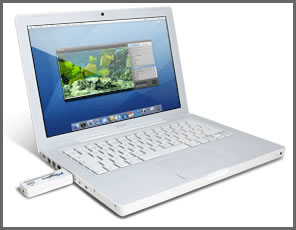 Miglia have not only signed a deal with software suppliers Equinux, but have a package available already with the software, called The Tube. They’re calling the hardware and software bundle the TVMini Express.
Miglia have not only signed a deal with software suppliers Equinux, but have a package available already with the software, called The Tube. They’re calling the hardware and software bundle the TVMini Express.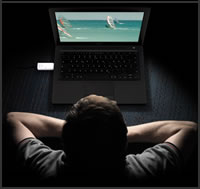 Equinux are confident with the swift reaction of the software, as they tell us it was written “from the ground up” in Cocoa, Apple’s object-oriented application environment designed specifically for developing Mac OS X-only native applications. ie it wasn’t written for Windows and ported over to the Mac.
Equinux are confident with the swift reaction of the software, as they tell us it was written “from the ground up” in Cocoa, Apple’s object-oriented application environment designed specifically for developing Mac OS X-only native applications. ie it wasn’t written for Windows and ported over to the Mac.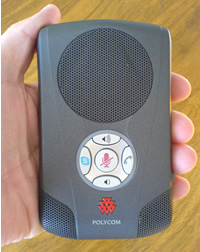 We mourned the lack of Mac and Linux support. Given that all Polycom needed to do was write a driver or two to get it running, we were disappointed that there was no movement on this
We mourned the lack of Mac and Linux support. Given that all Polycom needed to do was write a driver or two to get it running, we were disappointed that there was no movement on this 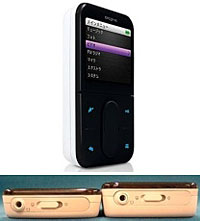 Fresh outta hi-tech Fat Farm, the new Zen Vision M and W models have managed to reduce their bulk by 15% on previous versions while wedging in a bigger hard disk.
Fresh outta hi-tech Fat Farm, the new Zen Vision M and W models have managed to reduce their bulk by 15% on previous versions while wedging in a bigger hard disk.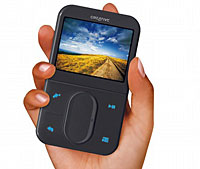 The rather desirable little fella weighs in at a light as heck 170g (and that includes the battery) and comes with a 2.5 inch colour screen.
The rather desirable little fella weighs in at a light as heck 170g (and that includes the battery) and comes with a 2.5 inch colour screen.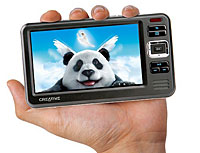 Vision W
Vision W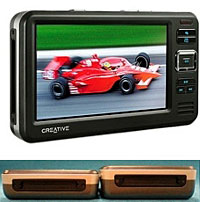 When?
When?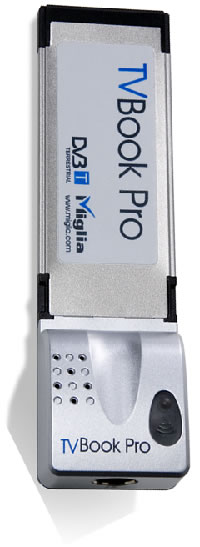 Until then, Miglia has been bundling Elgato’s TVEye software with their digital TV DVB-T/Freeview/TNT tuners.
Until then, Miglia has been bundling Elgato’s TVEye software with their digital TV DVB-T/Freeview/TNT tuners.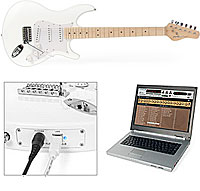 As the name suggests, this Strat-shaped guitar comes with a USB port, allowing aspiring six string warriors to plug into their laptops and access a host of cool effects.
As the name suggests, this Strat-shaped guitar comes with a USB port, allowing aspiring six string warriors to plug into their laptops and access a host of cool effects.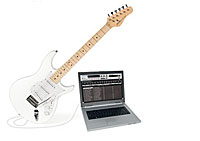 There’s also a multi-track recording/editing function for laying down dual-guitar sonic attacks, delicately layered tracks or a Ronnie Spector wall of noise.
There’s also a multi-track recording/editing function for laying down dual-guitar sonic attacks, delicately layered tracks or a Ronnie Spector wall of noise.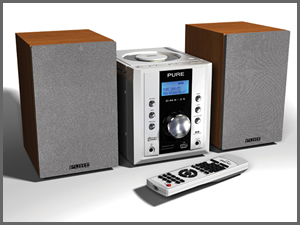 The new PURE DMX-25 DAB Micro System with MP3 playback comes with the ability to playback MP3/ WMA files from portable USB flash memory drives, SD memory cards and CDs. Beyond those terribly modern means, there’s also two auxiliary inputs, letting you connect iPod, MiniDisc or MP3 player.
The new PURE DMX-25 DAB Micro System with MP3 playback comes with the ability to playback MP3/ WMA files from portable USB flash memory drives, SD memory cards and CDs. Beyond those terribly modern means, there’s also two auxiliary inputs, letting you connect iPod, MiniDisc or MP3 player.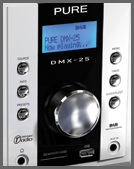 Speakers: 4 Ohms (nominal) impedance. 10W RMS power handling. Two-way design. Treated paper mid-bass driver. Custom-tuned crossover. Rosewood finish. Removable grilles.
Speakers: 4 Ohms (nominal) impedance. 10W RMS power handling. Two-way design. Treated paper mid-bass driver. Custom-tuned crossover. Rosewood finish. Removable grilles.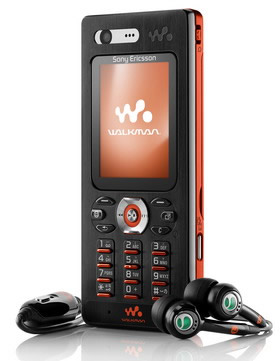 USB rules the roost for people loading and unloading content on and off their mobiles phones. It was employed in more handsets than all other interface standards combined in 2006, according to iSuppli Corp.
USB rules the roost for people loading and unloading content on and off their mobiles phones. It was employed in more handsets than all other interface standards combined in 2006, according to iSuppli Corp.